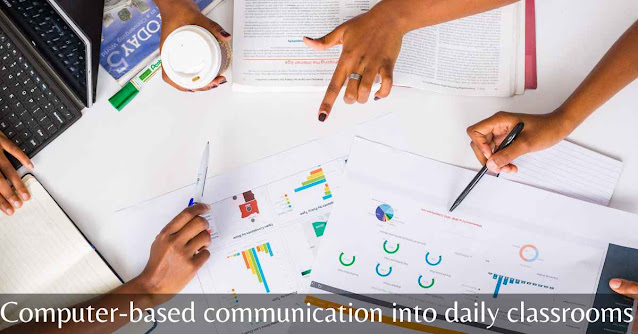What is ICT Education and How Can It Help Students?
ICT provides students with the skills and knowledge needed to use technology effectively in their studies.ICT Educational tools such as computers, tablets, and other digital devices are used to engage students in activities that promote active learning, critical thinking, collaboration, and problem-solving.
With ICT Education, teachers can create engaging learning experiences for students by using digital tools such as interactive whiteboards, virtual classrooms, online quizzes, videos, and simulations.
ICT Education can help teachers create new ways of teaching with technology that can improve student performance and increase engagement in the classroom.These tools can help teachers better assess student understanding of concepts while providing real-time feedback on student performance.
Read Also More...ICT in Education: Uses And Importance
How ICT Can Help Students Develop 21st-Century Skills
ICT also provides students with a range of activities to help them develop the necessary skills for success in the digital age. Students can learn how to navigate the ever-changing digital landscape through IT-based activities such as online research, coding, multimedia projects, and simulations.
In addition, IT can also provide a platform for students to practice their communication and creative writing skills by creating multimedia presentations or writing blogs. By using IT in the classroom, teachers can ensure that their students are well-equipped with the necessary 21st-century skills required for success in today’s digital age.
The Benefits of Integrating ICT in Education for Teachers & Schools
Integrating Information and Communication Technology (ICT) with the development of technology in education is a powerful means of improving teaching and learning in schools and colleges.
It helps teachers to become more effective in their work, while also providing students with new ways of learning.
Integrating (ICT) into education is becoming increasingly important for teachers and schools. ICT provides teachers with the tools to create a more engaging learning environment, while also helping them save time on mundane tasks
Integrating ICT into the classroom can help create more engaging learning experiences for students, while also helping them develop important skills such as problem-solving and critical thinking.
The benefits of integrating ICT into education are numerous, making it an essential part of any modern school's curriculum. It also allows schools to provide students with access to more educational resources than ever before.
Additionally, school-wide integration of technology can have a positive impact on student outcomes by providing access to new learning opportunities, such as online courses and virtual reality simulations.
What Are the Best Practices for Integrating Technology into Classrooms?
Technology has become an integral part of the learning process. It can help students stay engaged and motivated, as well as provide teachers with new tools to enhance their lessons.
Integrating technology into classrooms is a great way to engage students and make learning more interactive and fun. However, it can be tricky to know the best practices for integrating technology into classrooms.
These best practices include leveraging existing technologies
- Computers and tablets, to create interactive learning experiences
- Developing a strategy for using technology in the classroom
By understanding these strategies, teachers can create an effective plan for using technology in their classrooms.
- Providing adequate training and support for teachers to use the technology effectively
- Ensuring that technology is used in a way that is consistent with educational objectives
Technology has the potential to revolutionize education, but it must be used in a way that is consistent with educational objectives. Integrating technology into the classroom can help teachers and students achieve their goals more efficiently and effectively.
However, it is important to ensure that the technology is used in a way that supports learning, rather than hinders it. By following these best practices, educators can ensure that they are making the most out of their technology investments while also providing students with engaging learning experiences.
Conclusion:



